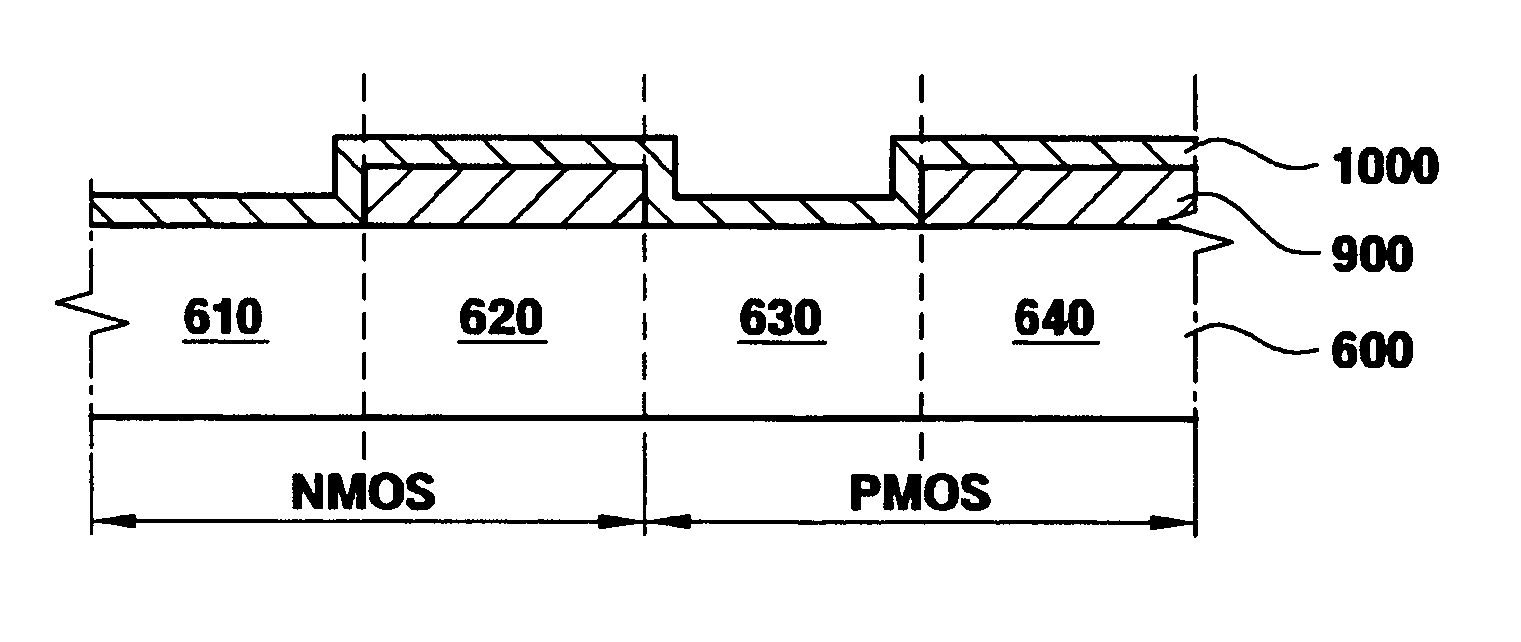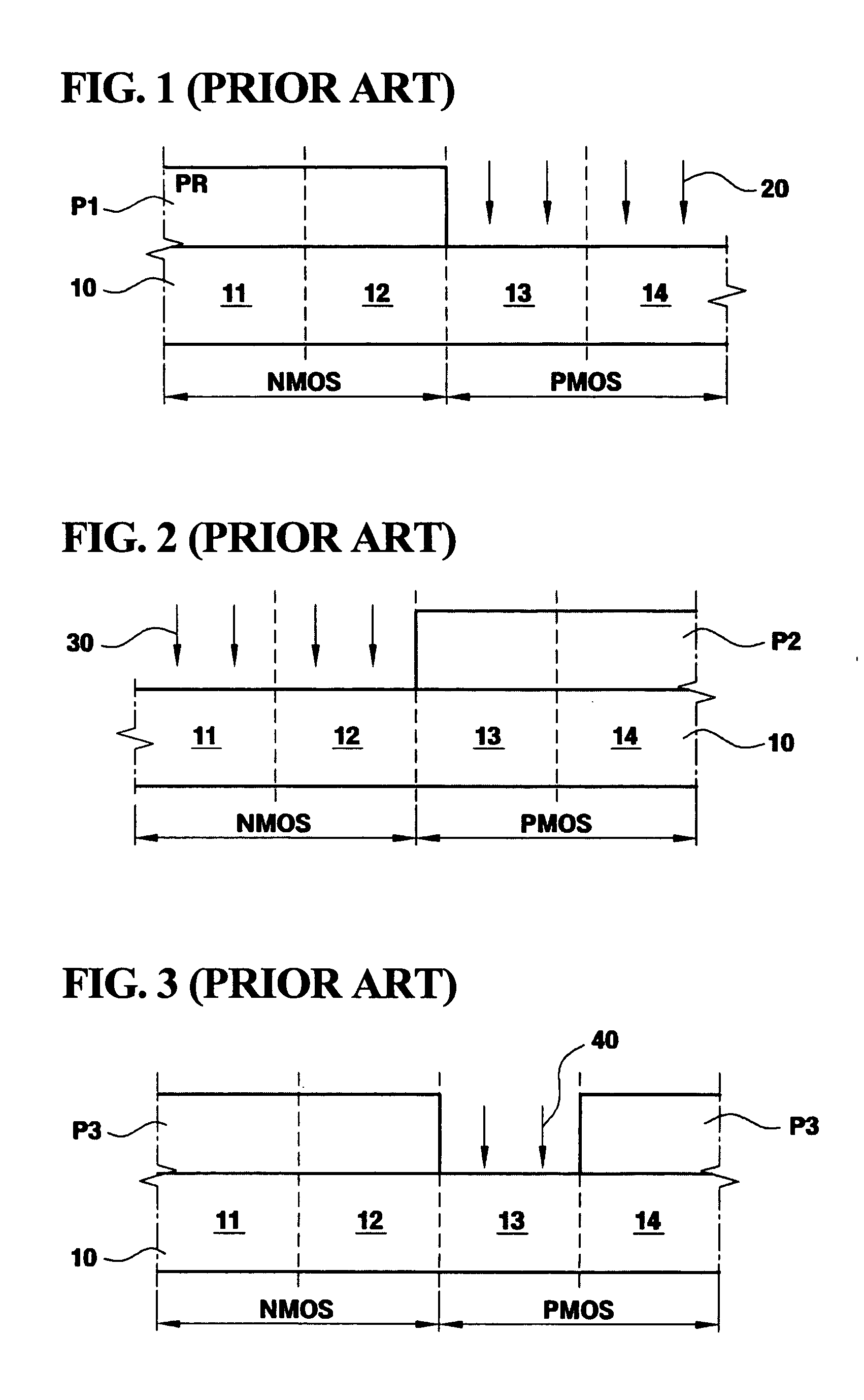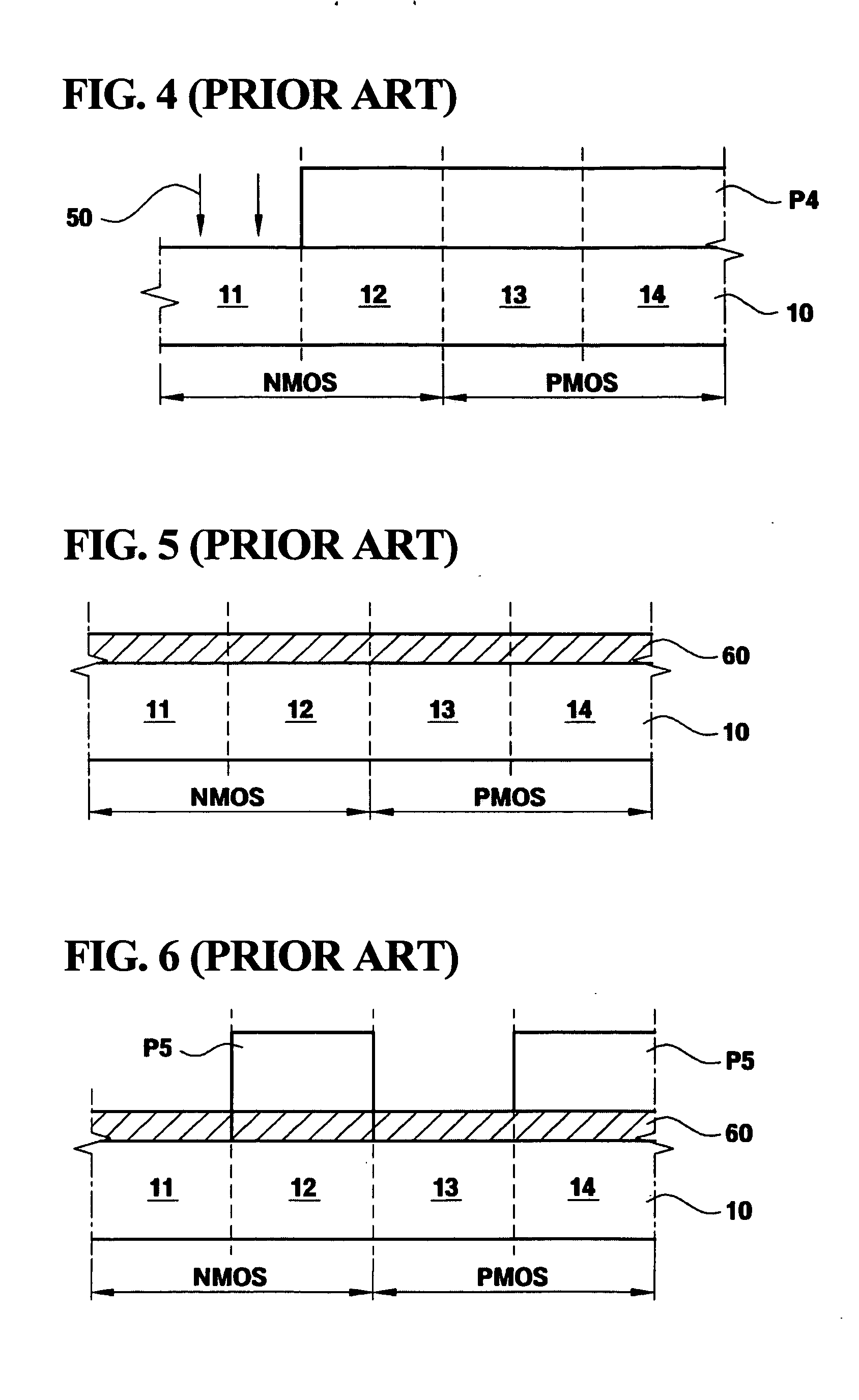Method of fabricating a dual gate oxide
- Summary
- Abstract
- Description
- Claims
- Application Information
AI Technical Summary
Benefits of technology
Problems solved by technology
Method used
Image
Examples
first embodiment
[0040] A method of fabricating a dual gate oxide of a semiconductor device according to the present invention will now be explained with reference to FIGS. 8 through 13.
[0041]FIGS. 8 through 13 illustrate cross-sectional views of sequential stages in a method of fabricating a dual gate oxide of a semiconductor device according to the first embodiment of the present invention.
[0042] Referring to FIG. 8, a first photoresist (PR) is coated on a substrate 100 having NMOS forming regions 110 and 120 and PMOS forming regions 130 and 140. The first PR is then patterned by photolithography to form a first PR pattern P1 on the substrate 100 to cover the NMOS forming regions 110 and 120 and to expose the PMOS forming regions 130 and 140. A first conductivity type impurity 210 for forming an N well and a second conductivity type impurity 220 for controlling a threshold voltage (Vth) are sequentially implanted into the exposed PMOS forming regions 130 and 140 using the first PR pattern P1 as a...
second embodiment
[0064] A method of fabricating a dual gate oxide of a semiconductor device according to the present invention will now be explained with reference to FIGS. 14 through 19.
[0065]FIGS. 14 through 19 illustrate cross-sectional views of sequential stages in a method of fabricating a dual gate oxide of a semiconductor device according to the second embodiment of the present invention.
[0066] Referring to FIG. 14, a first photoresist (PR) is coated on a substrate 600 having first and second NMOS forming regions 610 and 620 and first and second PMOS forming regions 630 and 640. The first PR is patterned by photolithography to form a first PR pattern P1 on the substrate 600. The first PR pattern P1 covers the first and second NMOS forming regions 610 and 620 and the first PMOS forming region 630 and exposes the second PMOS forming region 640.
[0067] A first conductivity type impurity 710 for forming an N well and a second conductivity type impurity 720 for controlling a threshold voltage (Vt...
PUM
 Login to View More
Login to View More Abstract
Description
Claims
Application Information
 Login to View More
Login to View More - Generate Ideas
- Intellectual Property
- Life Sciences
- Materials
- Tech Scout
- Unparalleled Data Quality
- Higher Quality Content
- 60% Fewer Hallucinations
Browse by: Latest US Patents, China's latest patents, Technical Efficacy Thesaurus, Application Domain, Technology Topic, Popular Technical Reports.
© 2025 PatSnap. All rights reserved.Legal|Privacy policy|Modern Slavery Act Transparency Statement|Sitemap|About US| Contact US: help@patsnap.com



